The long day of Joshua (Joshua 10:12-14) is one of the better-known and most controversial astronomical events in the Bible. Many Christians use this passage to demonstrate the power and the sovereignty of God over His creation. Atheists use this passage to discredit the Bible.
For millenniums, there has been discussion and controversy over the Scriptural record of when Joshua had the sun stand still. Most maintain that the miracle in Joshua 10:12-14 was the lengthened day, made longer than usual. The night would not come on too soon and be an obstruction to the zeal of the Hebrews in pursuing their enemies. Science explains the impossibility of that phenomenon.
Some say the true miracle is in the exact timing and combination of extraordinary natural events. Sometimes science is used to demystify and disparage the supernatural occurrence, but given the power and might of God, the miracle becomes a revelation of what actually happens.
Warning: this long article gives a lot of proof of Joshua’s stopping of the sun, but if you read any part of the article, please include the last section titled “The Facts in Summary.” (Rev. Dr. J Mike Howington)
The Revelation
Joshua came to the rescue of Gibeon at the famous battle of Gibeon, Bethhoron, and westward. In this battle, the sun stood still for a whole day. We debate the way it stood still, but we know it involved divine intervention. Some have calculated that the calendar lost a day about that time. Daylight was miraculously prolonged so that Joshua’s victory might be made complete.1
The Miracle is Well Documented
Flavius Josephus recorded in his “Antiquities of the Jews” that the place is called Beth-Horon; where Joshua also understood that God assisted him, which God declared by thunder and thunderbolts, and the falling of hail larger than usual.2
While Dr. Isaac Asimov does not directly endorse or discredit the miracle depicted in Joshua 10:12-14, he did recall that these verses were used to discredit the Copernican theory that the sun stood still and the earth moved about it.
The defection of Gibeon to the Israelites was another serious blow to the Canaanites. The petty kingdoms of the south, under the leadership of the large towns of Jerusalem and Hebron, formed a confederacy against the common foe and marched against Gibeon to force it back into the Canaanite ranks.
Joshua and his forces moved quickly to the relief of Gibeon and in a great battle scattered and destroyed the Canaanites. It was during this battle that one of the best-known events described in the Bible took place:
Joshua 10:12. Then spake … Sun, stand thou still upon Gibeon; and thou, Moon, in the valley of Ajalon.
Joshua 10:13. And the sun stood still, and the moon stayed …
So the sun … and hasted not to go down about a whole day.
Joshua 10:14. And there was no day like that before it or after it … (KJV)3
The Valley of Aijalon is about ten miles west of Gibeon.
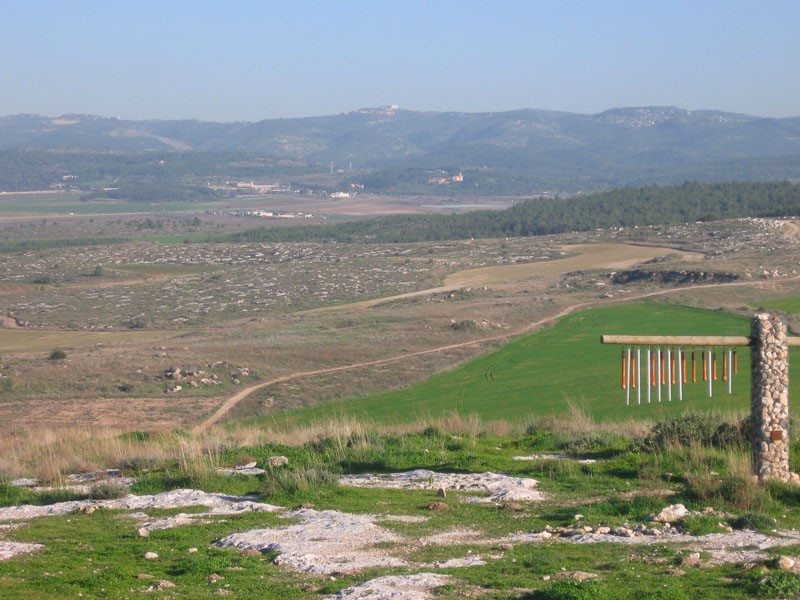
Asimov describes this miraculous lengthening of the day to allow the Israelites to complete their victory. Interpreting them literally, twenty-five centuries after the time of Joshua, men used these verses to counter the Copernican theory that the sun stood still and the earth moved about it. After all, if Joshua has to order the sun “stand thou still” it must imply that ordinarily the sun is moving. (This difficulty disappears if one understands the principle of “relative motion.”) 4
Evidence for the Miracle
“The LORD threw large stones from heaven on them (Joshua 10:11 NASB)” while a bright clear full moon lit the night. This allowed the Israelites to pass through the Aijalon Valley and complete the defeat of the foes under the bright clear moonlight sky, as Joshua requested of the Lord.
The statement “And there was no day like that, before it or after it” would be fully satisfied by a severe, greater than “Texas” sized, hailstorm while a bright clear full moonlit night. The occurrences of huge hailstorms have been documented worldwide.
For instance: an 18.75 inches circumference hailstone was recorded on June 22nd, 2003 during a severe thunderstorm that hit Aurora, Nebraska, United States. The hailstone was 7.0 inches in diameter, but no weight was officially recorded as the hailstone partially broke off as it hit the roof of a house. It is noteworthy, that the hail that hit Hamilton County (including Aurora) produced impact pits on the ground up to 14.1 inches across.

The largest recorded hailstone in the United States, from Vivian, SD on July 23, 2010, was recorded in the severe hailstorm produced by the Vivian, South Dakota severe supercell. The hailstone had a circumference of 18.625 inches, a diameter of 8 inches, and a weight of 1.9375 pounds. It produced an impact pit about 10 inches across the ground. Its official weight was 1.9375 pounds. The hailstone was larger, but a power outage caused some melting of the stone before NWS-Aberdeen, SD, could record it.
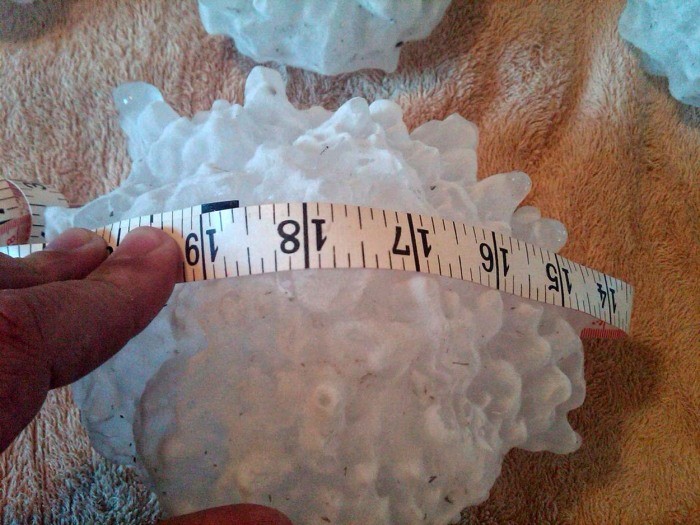
On the 8th of February, 2018, gigantic chunks of ice fell in Villa Carlos Paz, a resort city west of Córdoba, Argentina. Researchers investigating the 2018 storm found that one of the hailstones had a diameter between 7.4 inches and 9.3 inches across.

Concerning the Moon
The wording of the Hebrew text does not require the moon to stop in the sky, which would seem to break the promise of Genesis 8:22, “While the earth remaineth, seedtime and harvest, and cold and heat, and summer and winter, and day and night shall not cease”.
The bright clear full moon allowed the Israelites to pass through the Aijalon Valley and complete the defeat of the foes. The miracle does not break “My covenant with the day and My covenant with the night, so that day and night will not come at their appointed time” (Jeremiah 33:20 RSV).
The term perigee-syzygy or perigee full/new moon is preferred in the scientific community. Perigee is the point at which the Moon is closest in its orbit to the Earth, and syzygy is when the Earth, the Moon, and the Sun are aligned, which happens at every full or new moon. The Moon orbits Earth in an ellipse, an oval that brings it closer to and farther from Earth as it goes around. The farthest point in this ellipse is called the apogee and is about 253,000 miles (405,500 kilometers) from Earth on average.
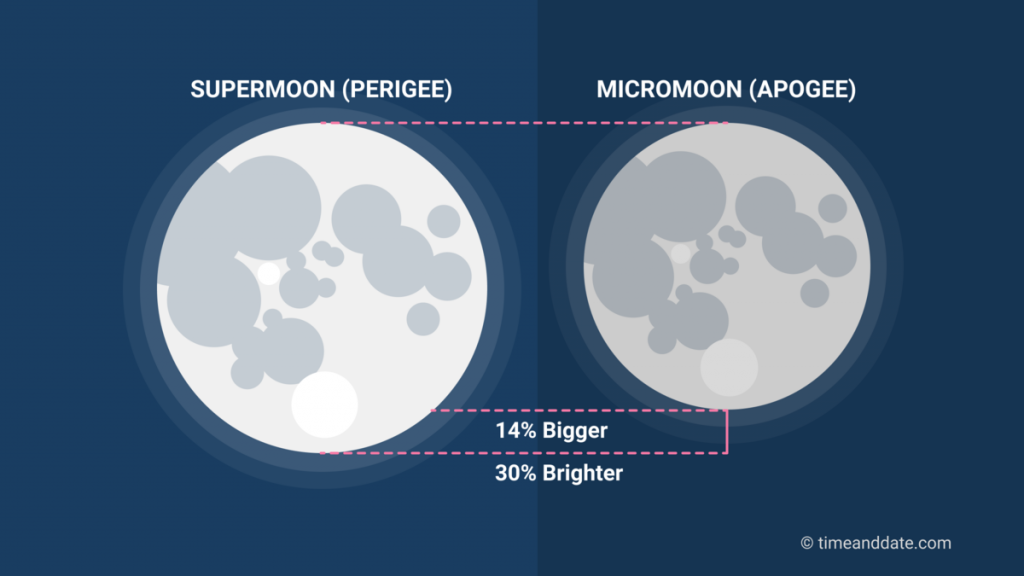
The statement “And there was no day like that, before it or after it” could be fully satisfied by the hailstorm happening for 24 hours with a bright clear full moonlit night. This allowed the Israelites to pass through the Aijalon Valley and complete the defeat of the foes under the bright clear moon, as Joshua requested of the Lord.
Evidence of the Long Day
One of the pieces of evidence for the historicity of the long day recorded in Joshua 10:13, and reiterated in Habakkuk 3:11, lies in the large body of traditions from many parts of the world according to which there was a long day (or night, or evening, depending upon the location) at about the same time that Joshua lived. David Nelson informs us:6
- Chinese history speaks of Yao, their king, declaring that in his reign the sun stood so long above the horizon that it was feared the world would have been set on fire; and fixes the reign of Yao at a given date, which corresponds with the age of Joshua the son of Nun. . .
- The Latin poet Ovid tells us, that a day was once lost, and that the earth was in great danger from the intense heat of an unusual sun. He mentions Phaeton–who was a Canaan prince. That fable originated with the Phoenicians, the same people whom Joshua fought.
T. W. Doane gives the following facts concerning these traditions: 6
- There are many stories similar to this, to be found among other nations of antiquity. Bacchus in the Orphic hymns, wherein it says that this god-man arrested the course of the sun and the moon.
- An Indian legend relates that the sun stood still to hear the pious ejaculations of Arjouan after the death of Krishna.
- A holy Buddhist by the name of Matanga prevented the sun, at his command, from rising, and bisected the moon. . . .
- A legend was found among the Ancient Mexicans to the effect that one of their holy persons commanded the sun to stand still, which command was obeyed.
In 1940, Harry Rimmer summarized these traditions as follows: 7
- In the ancient Chinese writings, there is a legend of a long day.
- The Incas of Peru and the Aztecs of Mexico have a like record,
- and there is a Babylonian and a Persian legend of a day that was miraculously extended.
- Another section of China contributes an account of the day that was miraculously prolonged, in the reign of Emperor Yeo.
Herodotus recounts that the priests of Egypt showed him their temple records, and that there he read a strange account of a day that was twice the natural length.
IIn 1950, Immanuel Velikovsky came out with his controversial book, Worlds in Collision, based on the premise that the account of the long day in Joshua is accurate, accounting for many other unsolved scientific mysteries. In support of his premise, he also refers to the ancient traditions of a long day: 8
- In the Mexican Annals of Cuauhtitlan, the history of the empire of Culhuacan and Mexico, written in Nahua-Indian in the sixteenth century, it is related that during a cosmic catastrophe that occurred in the remote past, the night did not end for a long time.
- In a footnote, Velikovsky states that the Mexican Annals of Cuauhtitlan, also known as the Codex Chimalpopca, has manuscripts containing a series of annals of very ancient date, many of them going back to more than a thousand years before the Christian era.
- Sahagun, the Spanish savant who came to America a generation after Columbus and gathered the traditions of the aborigines, wrote that at the time of one cosmic catastrophe the sun rose only a little way over the horizon and remained there without moving; the moon also stood still.
Velikovsky’s book brought a lot of discussion. “The Day The Sun Stood Still,” by Eric Larabee was published in Harper’s in January of 1950. It was reprinted in the Minneapolis Sunday Tribune on February 5 of that year, with the comment that “The article on this page, `The Day the Sun Stood Still’, will quite probably become the most discussed magazine piece of 1950.” The account is based on a book, Worlds in Collision, by Dr. Immanuel Velikovsky.
The article was published in Harper’s Magazine. The Tribune was the first newspaper to reprint it. The article has created such interest in publishing circles that the editors of Collier’s and of The Reader’s Digest have other presentations of the same idea. Five Sunday newspapers prepared a pictorial presentation of some of Velikovsky’s unusual theories which lace together elements of religious beliefs and scientific events and try to explain that “once, within the recorded history of man, the sun stood still.”
Gordon A. Atwater, curator of the Hayden Planetarium, wrote at the time, “The theories presented by Dr. Velikovsky are unique and should be presented to the world of science in order that the underpinning of modern science can be re-examined . . . I believe the author has done an outstanding job.”
Support For the Miracle
The Believer’s Study Bible on Joshua 10:12-14 –
It has been charged that an inconceivable catastrophe would have resulted had the earth stopped rotating. Certainly, if God can stop the earth, He can do so without causing such catastrophe. Alternately, it has been suggested that prolonged light resulted from (1) the slowing of the earth’s rotation so that one day is missing in the earth’s astronomical calendar; or (2) the temporary tilting of the earth’s axis; or (3) a local refraction of light. It has also been suggested that the sun only appeared to stop because the Israelites were able to accomplish in one day what they might have expected to do in two.
Some think that when miracles occur, natural forces are countered by a supernatural force. There is no suspension of natural laws. Natural laws continue to work, but the supernatural force is introduced to negate the effect of natural law. 10
This view has the advantage of regarding miracles as being genuinely supernatural or extra-natural. 11
New Defender’s Bible Study Notes on “O sun stand still”:
Next came the most amazing miracle of all, the stopping of the sun “in the midst of heaven” (presumably at mid-day) along with the simultaneous stopping of the moon in its orbit about the earth. Since the earth rotates on its axis, the sun could only be made to “stand still” relative to the earth by stopping the earth’s rotation.
This amazing event could not have been a miraculous change in atmospheric refraction of the sun’s rays nor supernatural strength imparted to the Israelites. So, it only seemed like a longer day. Neither would account for either the concurrent hailstones or the halting of the moon.
A gradual deceleration of the earth to a stop, then later a gradual acceleration to its normal speed would not produce any tectonic disturbances in the earth’s crust nor any displacement of objects on its surface. It would, however, generate profound atmospheric disturbances, since the normal circulation of the atmosphere is tied in closely with the earth’s rotation.
A gradual deceleration and later a gradual acceleration might even generate volcanic activity. The earth’s interior magma circulation may also be influenced to some degree by its rotation. Thus, a stopping of the planetary rotation and simultaneous stopping of the lunar revolution is the sole explanation satisfying all the descriptors of the event.
The entire phenomenon (deceleration, stones from heaven, hailstones, and acceleration) occupied “about a whole day.” This long day was about twice the length of a normal day. This event was surely a unique miracle, but not beyond the capabilities of the Creator of the sun and moon, and planets. He started their motions, has maintained them through the ages, and can change them at will. 12
Scientific Indication of the Trustworthiness of Joshua 10:13
Another indication of the trustworthiness of Joshua 10:13 can be found in astronomical data. It appears that one full day is missing in our astronomical calculations.
On different occasions, Sir Edwin Ball, the great British astronomer, and Professors Pickering of the Harvard Observatory, Maunders of Greenwich, and Totten of Yale have traced the missing day back to the time of Joshua.
If we disregard calendar changes and deal only with a chronology based upon solar motion, go back to the earliest available records, and trace the calendar through to the time of Joshua, the day of Joshua’s battle was on a Tuesday. But, if we compute backward to the time of Joshua from the present day, the day of the battle would have been on a Wednesday. The day of the month is the same, but it is a different day of the week.
In other words, if we reckon from the first recorded solstice in ancient Egyptian records, the day is Tuesday. But, if we reckon back from the most recent solstice, the day is Wednesday. These facts are extensively corroborated with astronomical data by Charles A. L. Totten in Joshua’s Long Day, and the Dial of Ahaz. Totten’s works were read and embraced by Mary Baker Eddy, the founder of the Christian Science Church. 13
According to M. K. Bryan’s article, computer calculations bearing upon the positions of the sun, moon, and planets were not coming out properly. These calculations were necessary, and had to be exact, for the orbits of satellites and manned space flights. However, once the long day of Joshua and the retreat of the sun backward ten degrees in II Kings 20:9-11 were taken into account, all of the calculations worked out perfectly.
M. K. Bryan’s article was widely quoted, and copies of it appeared in many places for several years. Harold Hill later published his account of these events in the thirteenth chapter of “How To Live Like A King’s Kid,” which was substantially the same as that in Kathryn Bryan’s article. 14
Dr. Robert C. Newman, of the Biblical Theological Seminary, wrote:
In summary, Totten’s work has no foundation independent of the Bible, and it is questionable whether he has properly understood Scripture regarding his one fixed point, the date of creation. Sometime between Totten’s work in 1890 and Rimmer’s in 1936, a story seems to have taken shape, a story in which Totten becomes a bystander and a skeptical astronomer becomes the calculator. Since 1936, the story seems to have been updated with the addition of “space age” features, NASA’s Space Flight Center scientists replacing the lone astronomer and computers to speed up the tedious calculations.15
Miracles that Suspend or Break the Laws of Nature
Miracles are striking or unusual workings of God that are clearly supernatural. Miracles are supernatural works of God, who is so almighty as to have created all things including nature and childbirth. These miracles are not explicable based on the usual patterns of nature. 16
Those acts of God whereby He makes Himself and His truth known at special times and specific peoples are “special revelations” of God. A genuine miracle is an unusual event, accomplishing some useful work, and revealing the presence and power of God. Genuine miracles are a special revelation of God’s presence and power that prove His existence, presence, concern, and power. 17
Miracles could be the conception that they are the manifestations of little-known or virtually unknown natural laws. If we fully knew and understood nature, we would be able to understand and even predict these events. 18
Miracles that suspend or break the laws of nature usually introduce complications requiring a whole series of compensating miracles. This view has miracles as being antinature. 19
Some think that when miracles occur, natural forces are countered by a supernatural force. There is no suspension of natural laws. Natural laws continue to work, but the supernatural force is introduced to negate the effect of natural law. 10 This view has the advantage of regarding miracles as being genuinely supernatural or extra-natural. 19
Evidence in the Translations of the Hebrew Text
Joshua said, in the sight of Israel, “O sun, stand still at Gibeon, And O moon in the valley of Aijalon.” The sun standing still would give Joshua more light in which to fulfill what the LORD had promised him in Joshua 10:8 that “not one of them shall stand before you.”
The extra light would allow Joshua to utterly destroy these five Amorite armies. Imagine the consternation of the pagans who worshiped the heavenly bodies and sought help from them. First, they experience hail from heaven and then prolongation of light from heaven. Sadly, they recognized the impotence of their so-called deities too late.
Joshua acted by an immediate impulse upon his mind from the Spirit of God. The terms to record the miracle agree with the accustomed manner in which the motions of the earth and sun are described within, even, our day. Today, the sun apparently moves, i.e. sunset, sundown, and sunup, but is really stationary. The diurnal movement of the earth on its axis is unnoticed by us, and would not have been known except by astronomical science.
The sun appeared to the Israelites over Gibeon, and the moon over the valley of Ajalon, and there they stayed in their course for “a whole day.” The fact is authenticated by the Divine testimony; and how it was accomplished lies entirely out of our province, beyond our comprehension.
Why did Joshua address the sun rather than the earth? Simply because he was using the language of observation; he was speaking from the perspective and appearance of things on earth during his era. People still do the same thing, even in the scientific community. Almanacs and journals record the hours of sunrise and sunset, yet no one accuses them of scientific error.
The “Long Day” of Joshua 10 Compels Explanation
Joshua, and for that matter all of Israel, witnessed the miracle. It had to be recorded in the ancient Scripture of the Book of Joshua. I was described in the vernacular of Joshua’s era.
What actually happened on that strange day? The answers are numerous (an eclipse, clouds over the sun, refraction of the sun’s rays, etc.). But the favorite explanation seems to be the view that: in answer to Joshua’s prayer, God caused the rotation of the earth to slow down so that it made one full rotation in 48 hours rather than in 24.
God stopped the cataclysmic effects that would have naturally occurred, such as monstrous tidal waves and objects flying around. Evidence that the earth’s rotation simply slowed down is found in the closing words of Joshua 10:13. The sun delayed going down for about a full day. The sun was thus abnormally slow or tardy in getting to sunset, that is, its progression from noon to dusk was markedly lethargic, giving Joshua and his soldiers sufficient time to complete their victorious battle.
The sun and moon were principal deities among the Canaanites. At the prayer of Israel’s leader, Canaan’s gods were compelled to obey. This disturbance to their gods was upsetting and frightening to the Canaanites. The secret of Israel’s triumph over the coalition of Canaanites is found in the words, “Surely the LORD was fighting for Israel!” In answer to prayer, Israel experienced the dramatic intervention of God on their behalf, and victory was assured. 20
The Hebrew text says,
“He [Joshua] said, In the sight of Israel, Sun, be thou silent in Gibeon.” The verb in the original (דום dōm) generally rendered cease, rest, be still, keep silence, implies cessation from action or noise, rather than from motion, and is most frequently used metaphorically to signify a silent, submissive frame of spirit, a subdued, patient, and expectant attitude of soul.
Joshua said, “Thou moon in the valley of Aijalon.” That is, over the valley of Aijalon. The city of Benjamin is in the near neighborhood of Gibeon. The light of the moon, even when seen, is of very little service while the sun is above the horizon, and as we suppose the sun itself to have been at this time near the horizon, we take this command to the moon to be introduced merely as a poetic ornament to make out the parallelism so common to the poetical style of the Hebrews. It may be that the whole passage is a quotation from the book of Jasher. The Book of Jashar is a Hebrew literary collection of songs written in poetic style to honor the accomplishments of Israel’s leaders.
Literal Hebrew Text
The Hebrew of the text is rather interesting and a close-to-literal translation might be as follows.
“and he said; Before the eyes of Israel,
Sun, on Gibeon be dumb (or silent),
and moon, in the valley of Aijalon.
And was dumb (or silent) the sun,
and the moon stood,
until the nation was avenged on its foes.
Is it not written in the Book of the Upright?
And stood the sun in the midst of the heavens,
and did not press to go as on a full day.
And never has been a day that before it or after it;
For Jehovah listened to the voice of a man.
For Jehovah fought for Israel.”
Two different Hebrew words are used in the passage which is often translated in these verses as “stand still” or “stood still”. The first is transliterated as “damam” and it has a basic literal meaning of “to be dumb” and by implication, to be astonished, to stop, or also to perish. And it is many times translated as being silent. The second word used is transliterated as “amad” and it has a basic literal meaning of “to stand”. Considering the many varying possibilities such as, to raise up, set forth, dwell, abide, endure, tarry, continue and even cease; we are left confused about the true implications of the Hebrew text.
And the last phrase of verse 13 could be properly translated as “as a day full.”
Paraphrase the Hebrew in Basic English
The Hebrew of the text is rather interesting and a close-to-literal translation which is a paraphrase from the Bible in Basic English might be as follows:
“and he said; Before the eyes of Israel,
Sun, on Gibeon be dumb (or silent),
and moon, in the valley of Aijalon.
And was dumb (or silent) the sun,
and the moon stood,
until the nation was avenged on its foes.
Is it not written in the Book of the Upright?
And stood the sun in the midst of the heavens,
and did not press to go as on a full day.
And never has been a day that before it or after it;
For Jehovah listened to the voice of a man.
For Jehovah fought for Israel.”
Modern Phraseology of the Joshua 10
The Israelite army traveled all night from Gilgal to arrive outside of Gibeon in an early morning surprise for its foes. After routing the opposing army with a great slaughter outside of Gibeon, they then continued in hot pursuit toward Beth-horon, where the hailstorm started its destruction. They pursued the Canaanite coalition.
Joshua asked for the Sun Be at Rest
The direction of the flow of the battle explains why Joshua was requesting “Sun, be at rest over Gibeon; and you, O moon, in the Valley of Aijalon.” The Aijalon Valley was an important military and caravan route through the approximately 1500 feet high rocky plateau.
Joshua and his army, hiked a three quarters marathon distance overnight, won a decisive battle in the morning, began the pursuit and witness the partial destruction of the surviving foes by a world class hailstorm and then continued the pursuit for another three quarters marathon distance to complete the destruction of the foes.
After the LORD attacked with hailstones, Joshua needed time to pursue and slay the enemy in daylight. If the night came, many of the enemy not killed by the hailstones would escape. Keep in mind this prayer is given in the sight of all Israel.
Conditions for the Figurative Space of a Day
One could imagine that there could be the longest and brightest possible lighting condition with the provision of a figurative resting of the sun and moon upon the area for a figurative space of a day. The elongation of the day is short of having the rotation of the earth stop when it seems apparent that to do so would be so catastrophic that no life on the earth would survive.
God Supernaturally Provided the Light
God miraculously provided twenty-four hours of light to aid Israel in destroying their enemy, the Amorites.
A variety of explanations have been given concerning this event. Some suggest a “local miracle” in which God allowed light to remain in Gibeon, much like the Hebrews had light even when the Egyptians were in the dark (Exodus 10:23). However, the text seems to indicate an actual change of the earth’s rotation, since it says the sun did not set.
Others argue that the language of the passage is poetic and therefore not to be taken literally. This view causes other problems. Applying figurative interpretations to difficult biblical passages does not truly answer the difficulties.
Another view attempts to explain the event as an eclipse that gave the appearance of a long day in which the sun did not set. Alternatively, some combination of an eclipse and refracted light in the atmosphere could have made the day appear longer than normal. God timed the event to miraculously coincide with Joshua’s prayer and moment of need.
Probably the best explanation is simply to take Joshua 10 at face value — God performed a stupendous miracle, causing the sun to delay its “setting.” God stopped the motion of the earth. There are objections to this explanation, based on the physics of motion, but the God who created the world and established natural laws is perfectly capable of compensating for any collateral complications. We may not have a scientific explanation of how God performed this miracle, but He did.
While we may not fully understand how this “long day” occurred, a miracle does not have to be scientifically proven — just accepted. Joshua prayed, and God supernaturally provided the light necessary for Joshua’s army to win its battle.
Here is the best Biblical explanation for the miracle:
Jeremiah 32:17+ ‘Ah Lord GOD! Behold, You have made the heavens and the earth by Your great power and by Your outstretched arm! Nothing is too difficult for You,
Jeremiah 32:27+ “Behold, I am the LORD, the God of all flesh; is anything too difficult for Me?” (Rhetorical question of course! Answer: Nothing!)
C.S. Lewis said that God sent hailstones and He can stop the sun. The Bible says it and Lewis believes it, regardless of whether or not he can explain it. While it has been described by some as the greatest miracle in the Bible, Lewis submits that the resurrection of Jesus Christ from the dead on the third day after He was crucified and died is a far greater and far more significant miracle.
The text Interpreted Within Its Context
If the text is not lifted out of context, its truth can be ascertained from the context in which it was written.
Before learning the truth of what happened, we need to examine the fiction and the fact about the long day of Joshua, and explain the event, then propose an explanation for what happened.
The Fiction about the Miracle
Mr. Harold Hill, President of the Curtis Engine Company in Baltimore, Maryland, and a consultant in the space program, relates the following development.
They called in the service department to check it out, and they said, “What’s wrong?”
Well, they found there is a day missing in space in elapsed time. They scratched their heads and tore their hair out. There was no answer.
A Christian man on the team said, “Joshua was concerned because he was surrounded by the enemy! And if darkness fell, they would overpower them. So, Joshua asked the Lord to make the sun stand still! The Bible says, “The sun stood still and the moon stayed and lasted not to go down about a whole day! (Joshua 10:12-13)”
They checked the computers going back to the time it was written and found it was close but not close enough. The elapsed time that was missing back in Joshua’s day was 23 hours and 20 minutes, not a whole day. Reading the Bible, they found it was, approximately, a day. These little words in the Bible are important, but they were still in trouble. If you cannot account for 40 minutes, you’ll still be in trouble 1000 years from now.
The words in 2 Kings 20:9-11 told of the following story: Hezekiah, on his death bed, was visited by the prophet Isaiah who told him that he was not going to die. Hezekiah asked for a sign as proof.
Isaiah said, “Do you want the sun to go ahead 10 degrees?”
Hezekiah said, “It is nothing for the sun to go ahead 10 degrees, but let the shadow return backward 10 degrees.”
Isaiah spoke to the Lord, and the Lord brought the shadow ten degrees backward.
Twenty-three hours and 20 minutes in Joshua, plus 40 minutes in Second Kings make the missing day in the universe!
The Fact of the Miracle
This would be a great story if it were true and, if it were true, it would convince many people who do not believe the Bible and do not believe that God is sovereign over his creation. But this story is a hoax. This event never happened and it is one of those great urban legends that is being circulated through the Internet.
This story about a missing day in the universe originated in 1936 when Harry Rimmer wrote a book titled The Harmony of Science and Scripture. In his book, Rimmer cited another book, one published in 1890 in which the author declared that two professors, one at Harvard and another at Yale, discovered a day missing in astronomical calculations.
The Factual Event of the Miracle
According to the biblical text, Joshua and the army marched all night from Gilgal and took the army of the Amorites by surprise. In addition, God threw the enemy army into total confusion by casting against them huge stones out of the sky and many died. The text says that more people died from the hailstones than the people of Israel killed with the sword.
It was at the height of the battle that Joshua cried out: “Sun, stand still at Gibeon, and Moon, in the valley of Aijalon.” And the sun stood still, and the moon stopped until the nation took vengeance on their enemies” (Joshua 10:12-13).
The Factual Explanation of the Miracle
God could indeed stop the sun and still maintain the solar system in place. But the laws of physics bring serious doubts to the traditional interpretation of the text. The stopping in place of the sun and the moon would affect the whole solar system. In addition, there are other problems with this interpretation.
Other views, such as the view that what happened was the refraction of the sun, that the sun and the moon appeared to be out of their regular places in the sky and the view that Joshua was only asking for release from the heat of the day, are without merit since these views do not explain the biblical text.
A Better Understanding of Joshua’s Request
A better understanding of Joshua’s request explains the text without doing damage to the events related by the biblical writer.
In Hebrew, the word translated “stand still” literally means “be silent.” In this context, Joshua was commanding the sun “to be silent,” that is, to keep from shining. Since the sun was rising in the east, his command to the sun was that it refrains from shining.
Since the hailstorm did not affect the army of Israel, Joshua needed the storm to last so that the hail could continue decimating the army of the Amorites. Consequently, Joshua’s prayer was for more darkness (the continuation of the storm) and not for more light. The reason Joshua’s army did not kill many soldiers was that the storm prevailed most of that day.
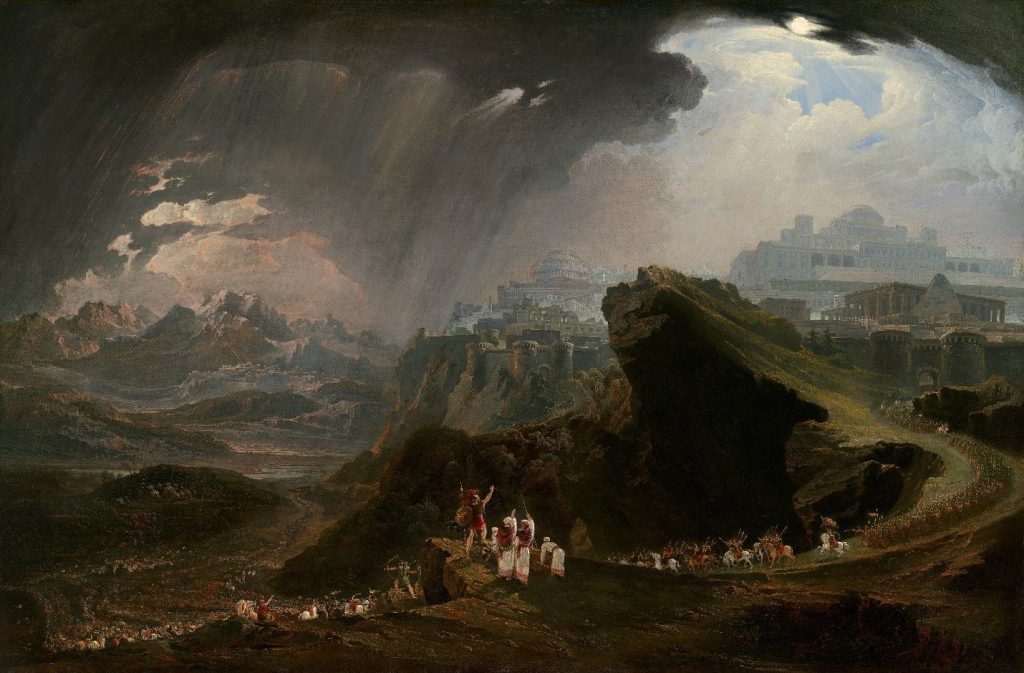
The view that Joshua prayed for more darkness is in agreement with the biblical text because the sun stood still (was silent, did not shine) for a whole day. This view also allows for a better understanding of the text without forcing upon it an interpretation that would require the reversal of the laws of physics.
The storm is the miracle referred to, not the astronomical phenomena. 21
The Facts in Summary
The long day of Joshua (Joshua 10:12-14) is one of the better-known and probably the most controversial astronomical event in the Bible. Many Christians love to use this passage to demonstrate the power and the sovereignty of God over his creation. Atheists love to use this passage to discredit the Bible.
Most maintain that the miracle in Joshua 10:12-14 was the lengthened day, made longer than usual. The night would not come on too soon and be an obstruction to the zeal of the Hebrews in pursuing their enemies. Science explains the impossibility of that phenomenon. Sometimes science is used to demystify and disparage the supernatural occurrence.
If the text is not lifted out of context, its truth can be ascertained in the context in which it was written.
Joshua prayed for more darkness is in agreement with the biblical text because the sun “stood still” (meaning was silent, did not shine) for a whole day. This view also allows for a better understanding of the text without forcing upon it an interpretation that would require the reversal of the laws of physics. The storm is the miracle referred to, not the astronomical phenomena. The text emphasizes the storm and not the sun. Just as Jesus could calm a storm, God can easily cause a storm of hailstones to last the whole day.
__________________ SHOP: ________________


NASB Comfort Print Thinline Bible, Red Letter Edition–bonded leather, burgundy
By Zondervan
The beloved 1995 Edition of the New American Standard Bible is now easier to read with Zondervan’s exclusive NASB Comfort Print® typeface. This edition of the NASB Thinline Bibles is available in a variety of sophisticated designs in a portable, easy-to-read format.
- The full text of the New American Standard Bible, 1995 Edition
- Exquisite, durable covers
- Less than one inch thick
- Double-column format
- Presentation page
- Two satin ribbon markers
- Words of Christ in red
- Exclusive Zondervan NASB Comfort Print 9 point type
Features:
____________________________________________
In conclusion, consider what the Daily Bread email message sent on 1/30/2023 says,

Joshua 10:11-13 – As they fled from before Israel, while they were at the descent of Beth-horon, the LORD threw large stones from heaven on them as far as Azekah, and they died; there were more who died [i]from the hailstones than those whom the sons of Israel killed with the sword. Then Joshua spoke to the LORD in the day when the LORD delivered up the Amorites before the sons of Israel, and he said in the sight of Israel, “O sun, stand still at Gibeon, and O moon in the valley of Aijalon.”
So the sun stood still, and the moon stopped, until the nation avenged themselves of their enemies. (NASB)
It appears that Joshua asked for the Sun to stand still.
He did not. Examine the Hebrew text and context of the spoken language of Joshua’s day. If the text is not lifted out of context, its truth can be ascertained in the context in which it was written.
Joshua prayed for more darkness is in agreement with the biblical text because the sun stood still (was silent, did not shine) for a whole day. The emphasis is on the storm and not the sun, that is what the writer is trying to convey to the reader. Just as Jesus could calm a storm, God can easily cause a storm of hailstones to last the whole day. A storm of hailstones blocks the sun for the whole day.
You Can Receive The Daily Bread, for FREE.
To receive the Daily Bread email messages, free on Mon., Wed., and Fri., in your email inbox, just fill in the form below or send an email, and ask to be added, to jmikeh@jmhowington.com
References:
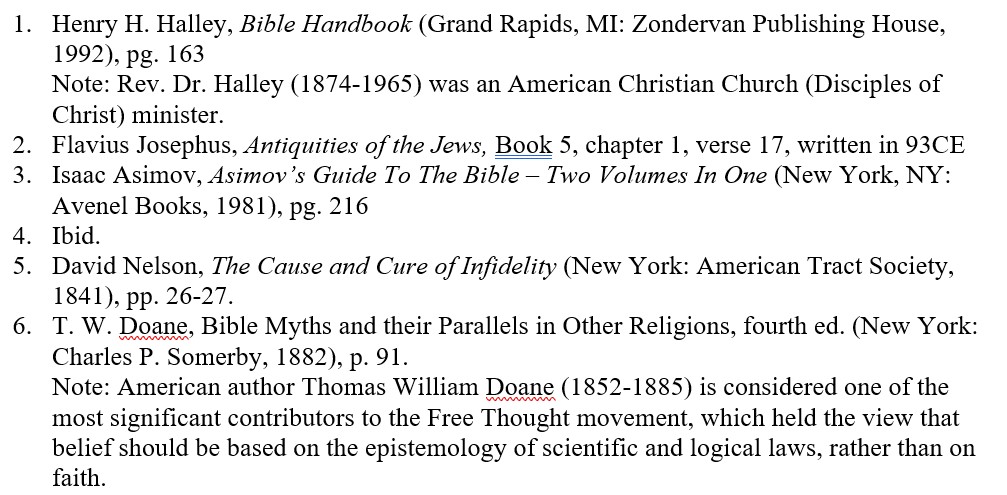
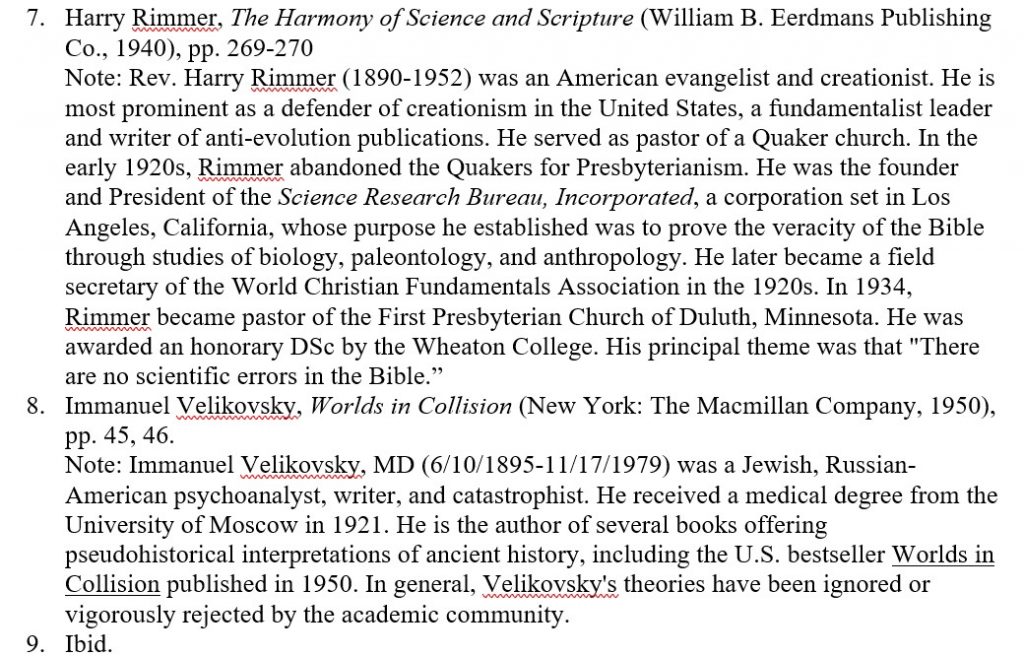
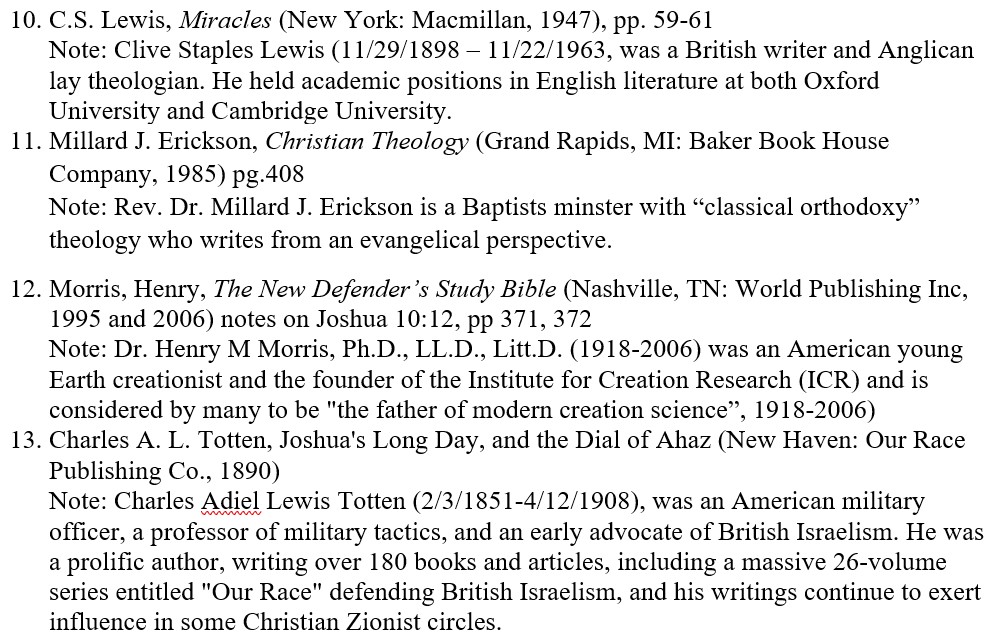
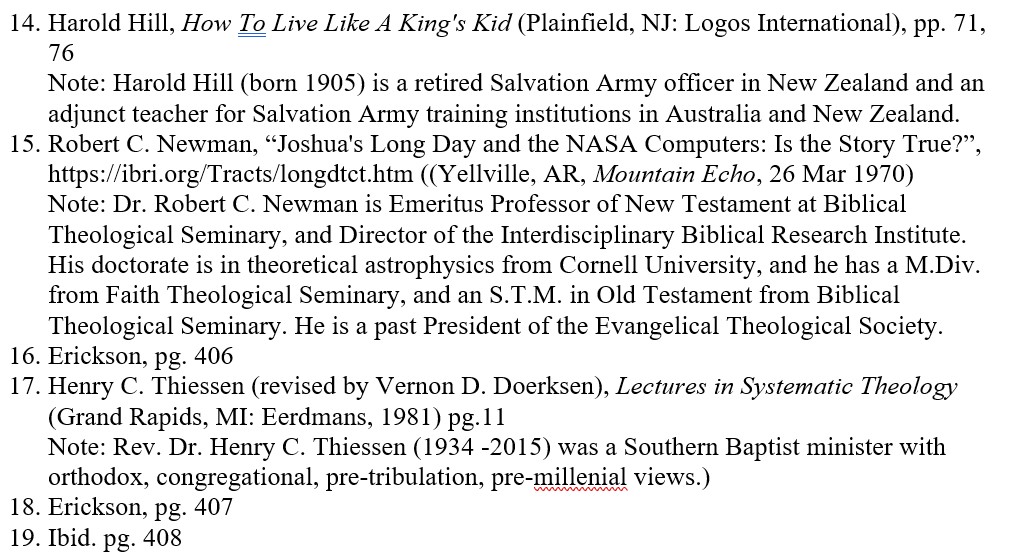


Thanks for sharing. I read many of your blog posts, cool, your blog is very good.
Thanks for sharing. I read many of your blog posts, cool, your blog is very good.